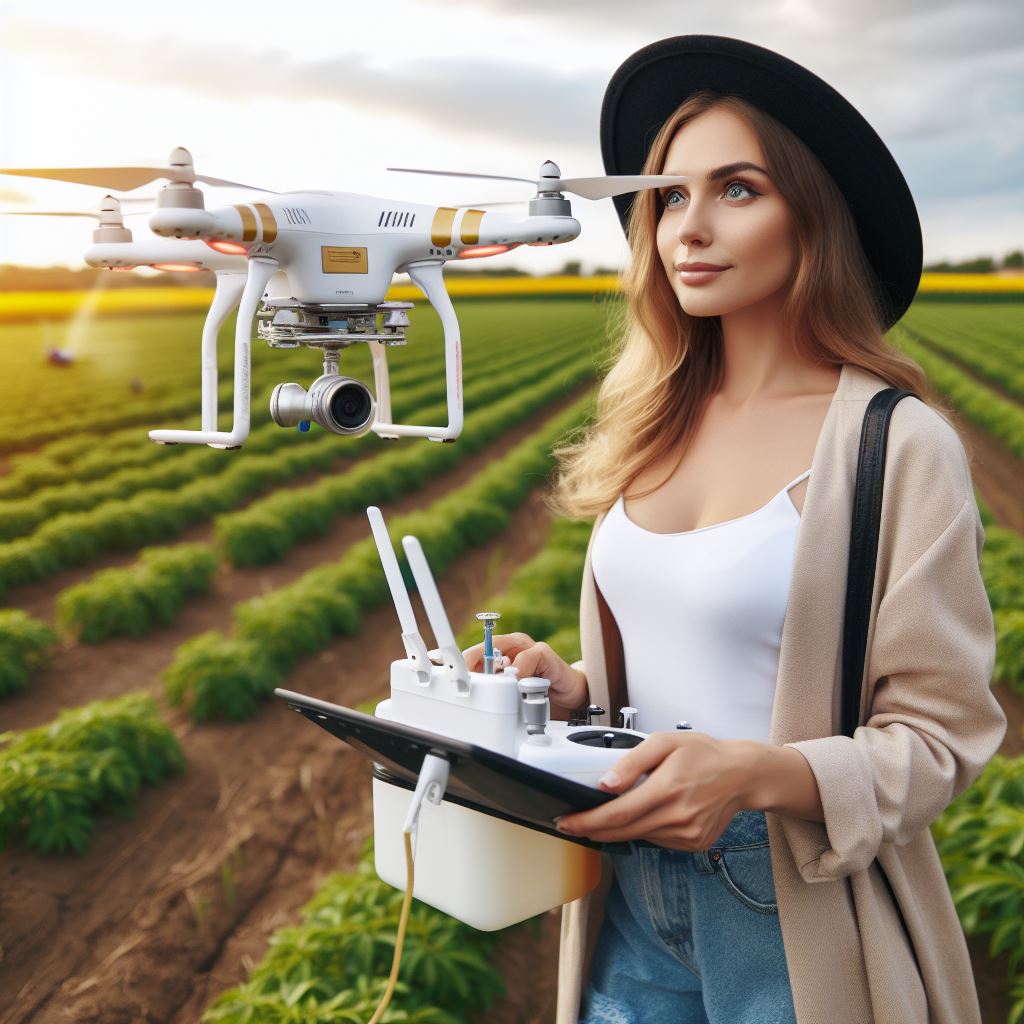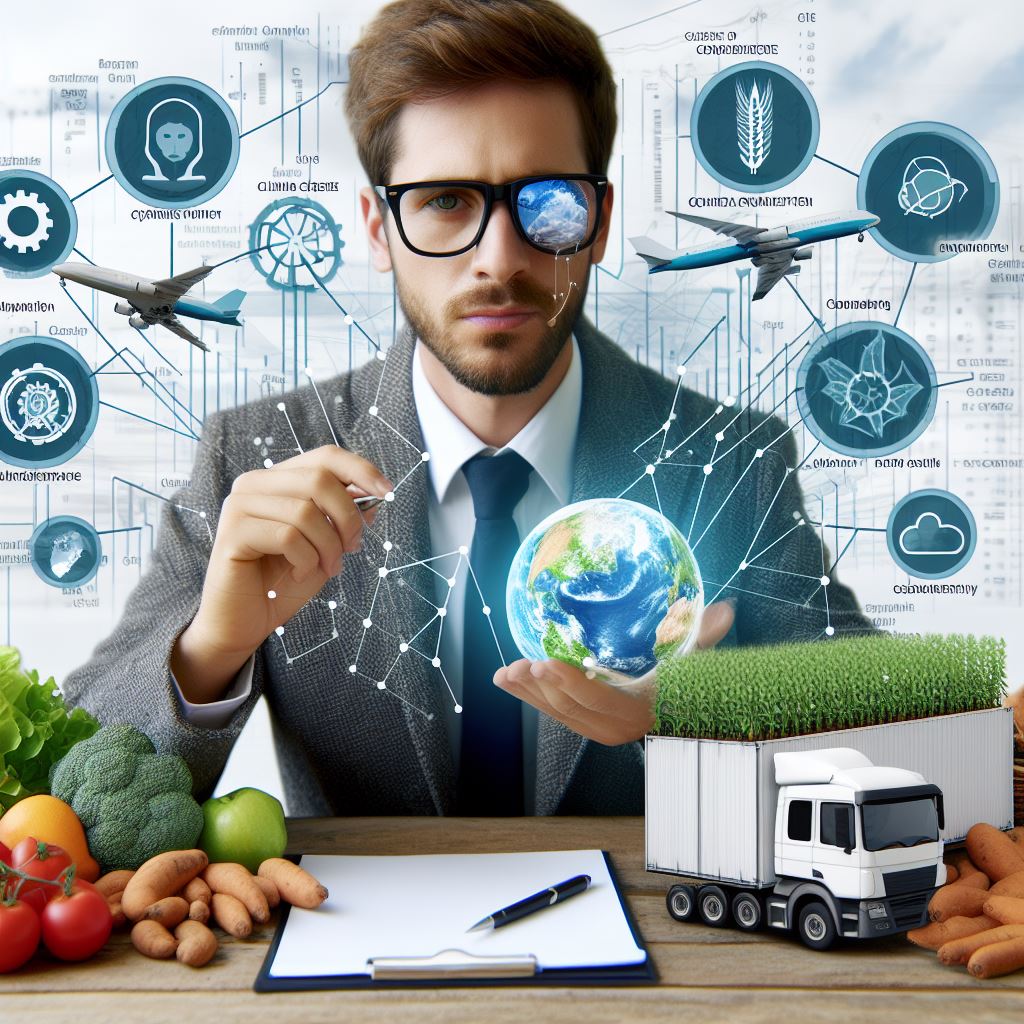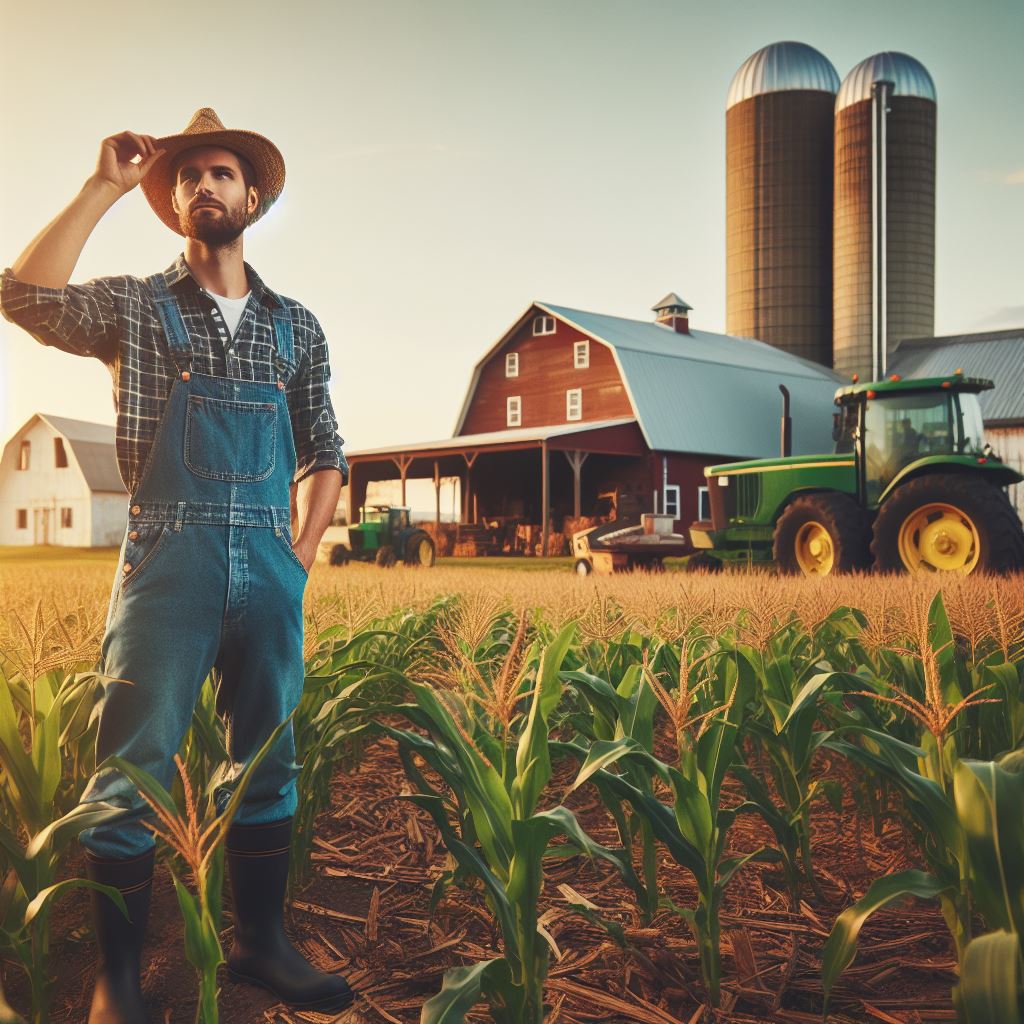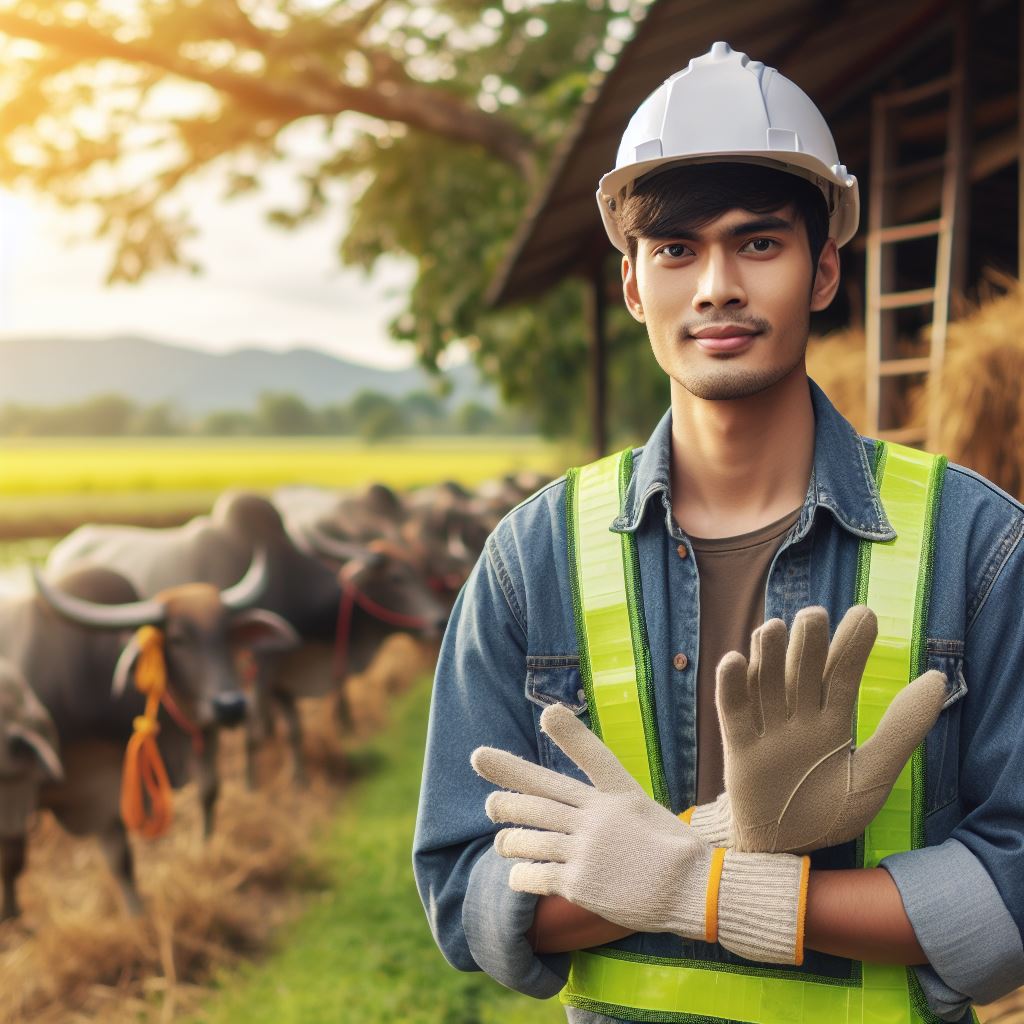Introduction
Explore the transformative landscape of agriculture as we delve into IoT Role in Smart Farming Agriculture.
Delve into how Internet of Things (IoT) technologies revolutionize farming practices, fostering precision, efficiency, and sustainability for a flourishing agricultural future.
A. Definition of smart farming and IoT
Smart farming is the use of Internet of Things (IoT) technology in agriculture to increase efficiency.
Real-time data on soil conditions, crop health, and weather enable precision farming.
This innovation optimizes resource use, boosts productivity, and contributes to sustainable, efficient, and technologically advanced
B. Overview of the importance of smart farming in agriculture
Smart farming is crucial for addressing challenges like population growth and food security.
The agricultural landscape undergoes a revolution through smart farming, where technology integrates for data-driven decisions, with a focus on the pivotal role of IoT in smart farming agriculture.
Sensors, drones, and AI optimize resource use, monitor crops, and enhance yields.
Precision agriculture techniques not only increase efficiency but also promote sustainability, mitigating environmental impact and ensuring a more resilient and productive future for farming.
Explore the transformative landscape of agriculture with our latest blog on IoT Role in Smart Farming Agriculture.
How IoT is Revolutionizing Agriculture
A. Explanation of IoT and its application in farming
The Internet of Things (IoT) refers to the network of physical devices embedded with sensors, software, and other technologies that enable them to connect and exchange data.
In agriculture, IoT has emerged as a game-changer, transforming traditional farming methods into smart and efficient practices.
- Precision farming: IoT enables farmers to monitor and control various farming processes with great precision.
Through sensors and actuators, data on soil moisture, temperature, humidity, and other environmental factors can be collected and analyzed in real-time. - Smart irrigation: IoT-based systems can optimize water usage by monitoring soil moisture levels and weather conditions.
This helps farmers to automate irrigation processes, ensuring that crops receive the right amount of water at the right time. - Livestock monitoring: IoT devices can be used to track the health and behavior of livestock.
Sensors attached to animals can provide real-time data on factors such as body temperature, heart rate, and feeding patterns.
This allows farmers to detect anomalies and provide timely care. - Crop health monitoring: Connected devices equipped with sensors can continuously monitor plant health parameters such as nutrient levels, pest infestations, and diseases.
This early identification of problems allows for targeted interventions, reducing the need for pesticides and increasing crop yield.
B. Benefits of IoT in agriculture
- Increased productivity: By leveraging IoT solutions, farmers can optimize resource utilization, reduce waste, and enhance productivity.
Precise monitoring and controlled processes lead to improved crop yields and higher-quality produce. - Cost savings: IoT technologies help farmers save cost by reducing manual labor, automating tasks, and preventing crop losses.
For instance, energy-efficient irrigation systems based on real-time data can minimize water usage and lower utility expenses. - Enhanced sustainability: IoT promotes sustainable farming practices by minimizing the use of resources, such as water and pesticides.
Through precise farming, environmental impact can be reduced and natural resources can be preserved for future generations. - Data-driven decision making: With IoT, farmers have access to vast amounts of real-time data collected from sensors.
This data can be analyzed and used to make informed decisions about planting, irrigation, fertilization, and pest control strategies.
This results in better decision making and improved efficiency. - Improved monitoring and traceability: IoT enables farmers to track and trace the entire supply chain, ensuring transparency and accountability.
From farm to fork, consumers can be confident about the origin, quality, and safety of the agricultural products they consume.
In review, IoT has revolutionized agriculture by providing farmers with advanced technologies for smart farming.
Through precision monitoring, automation, and data analysis, IoT enables farmers to optimize resource usage, increase productivity, and promote sustainability.
Embracing IoT in agriculture is not just a technological advancement but a necessity for feeding the growing global population efficiently.
Transform Your Agribusiness
Unlock your farm's potential with expert advice tailored to your needs. Get actionable steps that drive real results.
Get StartedRead: Global Branding for Farm Products
Key IoT Technologies Used in Farming
In the realm of agriculture, the IoT plays a pivotal role, transforming age-old farming methods.
By linking physical devices to the internet and employing cutting-edge technologies, the realization of smart farming has been made possible.
Emphasizing the IoT Role in Smart Farming Agriculture, it signifies a groundbreaking shift in the agricultural landscape.
In this section, we will explore the key IoT technologies used in farming and their significance in improving agricultural practices.
A. Sensor technology
Sensors play a crucial role in smart farming by collecting real-time data from various environmental and agricultural factors.
These sensors can monitor soil moisture, temperature, humidity, and even plant growth.
There are several types of sensors used in agriculture, such as soil moisture sensors, weather sensors, and crop yield sensors.
Each sensor provides valuable data, enabling farmers to make informed decisions and take appropriate actions.
The functions and benefits of sensors in farming are immense.
Sensors enable farmers to optimize irrigation, saving water and reducing costs.
They also help in identifying nutrient deficiencies in crops, preventing yield loss.
Additionally, sensors can detect and alert farmers about pest infestations or diseases, allowing for timely intervention.
Overall, sensors empower farmers with real-time data, enabling them to enhance productivity and minimize risks.
B. Connectivity and network infrastructure
To leverage IoT in farming, strong connectivity and network infrastructure are essential.
Wireless connectivity options, such as Wi-Fi, Bluetooth, and LPWAN (Low-Power Wide Area Network), play a crucial role in connecting sensors and other IoT devices on the farm.
These wireless options provide reliable and seamless data transmission, ensuring uninterrupted monitoring and control.
Having a robust network infrastructure is equally important.
A strong network ensures reliable communication between sensors, devices, and the central monitoring system.
With a well-established network, farmers can effectively manage a large number of sensors and devices deployed across their farms.
It allows for quick response time and efficient data transfer, optimizing the overall farming operations.
C. Data analytics and management
Data collection and analysis form the backbone of smart farming.
The enormous amount of data generated by sensors and IoT devices can unlock valuable insights for farmers.
It helps in understanding crop behavior, predicting weather patterns, and optimizing resource allocation.
Showcase Your Farming Business
Publish your professional farming services profile on our blog for a one-time fee of $200 and reach a dedicated audience of farmers and agribusiness owners.
Publish Your ProfileEffective data analytics and management enable farmers to make data-driven decisions, leading to higher productivity and profitability.
Various tools and platforms are available for data analytics and management in smart farming.
These tools employ advanced algorithms and machine learning techniques to analyze the collected data, providing actionable insights.
Farmers can use these insights to optimize irrigation schedules, apply precise amounts of fertilizers, and detect anomalies in their crops.
Additionally, cloud-based platforms allow farmers to access their data remotely, enabling real-time monitoring and control.
In essence, IoT technologies, including sensor technology, connectivity, and network infrastructure, and data analytics, are revolutionizing the agriculture industry.
These technologies empower farmers with valuable data, enabling them to make informed decisions and optimize their farming practices.
By embracing IoT in farming, we can ensure sustainable and efficient agricultural production to meet the growing demands of the world.
Read: Tech in Organic Farming: New Horizons
Applications of IoT in Agriculture
The advent of the Internet of Things (IoT) has transformed numerous sectors, including agriculture.
Its pivotal role in transitioning conventional farming to smart farming enhances productivity, efficiency, and sustainability.
This section delves into the applications of IoT in agriculture, emphasizing its crucial IoT Role in Smart Farming Agriculture.
A. Crop monitoring and management
Remote sensing technologies provide valuable data on crop health and growth, enabling farmers to make informed decisions.
Precision irrigation systems use sensors to monitor soil moisture levels, optimizing water usage and preventing over- or under-irrigation.
B. Livestock monitoring and management:
IoT solutions allow farmers to remotely monitor animal health and behavior, enabling early detection of diseases and improved care.
Automated feeding and milking systems ensure efficient and precise feeding schedules, enhancing productivity and reducing labor costs.
C. Supply chain optimization
Tracking and monitoring agricultural products using IoT devices ensure transparency and traceability from farm to table.
Cold chain management systems utilize IoT sensors to maintain optimal temperature and humidity levels during transportation and storage.
D. Environmental monitoring and sustainability:
IoT solutions enable farmers to monitor soil quality, temperature, and moisture, assisting in efficient resource management.
Precision agriculture utilizes IoT data to optimize fertilizer and pesticide usage, minimizing environmental impact and promoting sustainable practices.
Furthermore, By harnessing the power of IoT, farmers can make data-driven decisions, reducing costs, and maximizing yield.
The integration of IoT devices with agriculture brings automation and efficiency, enabling farmers to monitor and manage their crops and livestock more effectively.
Additionally, IoT enhances supply chain visibility, ensuring the quality and safety of agricultural products.
Moreover, IoT facilitates environmental monitoring, allowing farmers to adopt precision farming techniques tailored to specific soil and weather conditions.
This helps optimize resource allocation and reduce water and chemical waste.
With IoT-enabled devices, farmers can remotely monitor their fields, receive real-time alerts, and take immediate action, thereby mitigating risks and improving overall agricultural sustainability.
All in all, IoT has a significant role to play in revolutionizing the agriculture industry.
Its applications in crop monitoring, livestock management, supply chain optimization, and environmental monitoring are transforming traditional farming practices.
By embracing IoT, farmers can enhance productivity, reduce costs, and contribute to sustainable agriculture practices.
Read: Global Eco-Farming: Market Trends

Challenges and Considerations of Smart Farming with IoT
Smart farming, with the integration of IoT technologies, holds immense potential to revolutionize the agriculture industry.
However, there are several challenges and considerations that need to be addressed for successful implementation.
A. Connectivity and rural areas
1. Challenges of implementing IoT in remote locations
One of the main challenges faced in smart farming is the lack of connectivity in rural areas.
Remote locations often have poor internet infrastructure, making it difficult to establish a reliable network for IoT devices.
Farmers in these areas may struggle to access real-time data and control the IoT devices on their farms.
2. Strategies to overcome connectivity issues
To overcome connectivity issues, farmers can explore alternative network options such as satellite or long-range wireless technologies.
These technologies can provide connectivity even in remote areas with limited internet access.
Additionally, governments and organizations need to invest in improving internet infrastructure in rural areas to support the widespread adoption of IoT in agriculture.
B. Data security and privacy concerns
1. Risks associated with data collection and storage
With the increased use of IoT devices in farming, there is a significant amount of data being collected and stored.
This data may include sensitive information about the farm, crops, or livestock.
Showcase Your Farming Business
Publish your professional farming services profile on our blog for a one-time fee of $200 and reach a dedicated audience of farmers and agribusiness owners.
Publish Your ProfileThe main concern is the risk of this data being intercepted or accessed by unauthorized individuals, leading to privacy breaches or even sabotage.
2. Measures to protect sensitive farm data
Farmers and agricultural organizations should prioritize data security measures to protect sensitive farm data.
This can be done by implementing encryption techniques, secure storage systems, and robust authentication protocols.
Regular data backups should also be performed to prevent loss of valuable information.
Additionally, educating farmers about data security best practices can help create awareness and ensure proper handling of farm data.
C. Cost and adoption barriers
1. Affordability of IoT technologies for small-scale farmers
The cost of implementing IoT technologies can be a barrier for small-scale farmers with limited financial resources.
IoT devices, sensors, and other necessary equipment may be expensive, making it difficult for these farmers to adopt smart farming practices.
Governments and agricultural organizations should provide financial support and incentives to make these technologies more affordable and accessible to small-scale farmers.
2. Education and training for successful implementation
Another challenge is the lack of education and training among farmers regarding the use and management of IoT technologies.
Farmers need to be equipped with the knowledge and skills required to successfully implement and utilize IoT devices on their farms.
Agricultural universities, extension services, and training programs should provide comprehensive education on smart farming techniques and IoT technology to bridge this knowledge gap.
Read: Green Tech in Farms: Cost Analysis
Future Prospects and Trends in Smart Farming with IoT
Smart farming, powered by the Internet of Things (IoT), has already made significant advancements in the agricultural sector.
But what does the future hold for this technology?
Let’s explore the emerging technologies, possibilities of collaboration, and predictions for the future of smart farming with IoT.
A. Emerging technologies and possibilities
- Artificial intelligence and machine learning are revolutionizing agriculture. By analyzing enormous amounts of data, these technologies can optimize crop production, predict diseases, and automate tasks like irrigation and harvesting.
- Blockchain technology ensures transparent supply chains by creating an immutable ledger of every transaction. Farmers and consumers can trace the origin and journey of agricultural products, enhancing trust and ensuring product authenticity.
B. Collaboration and partnerships in the industry
- Collaboration between technology companies and farmers brings numerous benefits. Farmers gain access to cutting-edge IoT solutions and expertise, while tech companies receive valuable insights from real-world farming practices.
- Successful partnerships are already transforming the agricultural landscape. For example, a collaboration between CropX, an IoT soil sensing company, and dairy farmers resulted in optimized irrigation, reducing water usage and improving crop yields.
C. Predictions for the future of smart farming
The future of smart farming with IoT holds great promise.
With the advancements in technology and increasing global challenges, here are some predictions for the future of this industry:
- Increased automation: The integration of IoT devices and AI will lead to further automation of farming processes, making agriculture more efficient and sustainable.
- Precision agriculture: IoT sensors and AI algorithms will enable farmers to monitor and manage individual plants or animals, optimizing inputs and minimizing waste.
- Remote monitoring and control: Farmers will have the ability to remotely monitor and control their farms using IoT devices, ensuring optimal growing conditions and reducing labor costs.
- Data-driven decision making: With the abundance of data collected from IoT devices, farmers will be able to make informed decisions regarding crop management, resource allocation, and risk assessment.
- Integration of robotics: Robotics and AI technologies will work hand in hand with IoT devices to perform complex tasks such as selective harvesting, weed control, and autonomous farming.
In a nutshell, the future prospects of smart farming with IoT are vast.
The emergence of technologies like AI, machine learning, blockchain, and the potential for collaboration and partnerships in the industry will bring new possibilities and advancements to agriculture.
By embracing these trends, farmers can achieve greater productivity, sustainability, and profitability.
Find Out More: Proven Agribusiness Strategies for Maximum Profit
Conclusion
A. Recap of the Importance of IoT in Agriculture
IoT revolutionizes farming, enhancing efficiency, precision, and sustainability.
Real-time data empowers farmers with actionable insights.
- Empowering precision agriculture.
- Enhancing resource efficiency.
- Maximizing crop yield.
- Minimizing environmental impact.
- Improving decision-making.
B. Encouragement for Farmers to Embrace Smart Farming Technologies
Farmers, embrace the future! Adopting IoT fosters resilience, ensuring higher productivity and economic sustainability.
Embrace technology for:
- Increased profitability.
- Reduced operational costs.
- Optimized resource utilization.
- Mitigated risks.
- Sustainable farming practices.
C. Final Thoughts on the Potential Impact of IoT on the Agriculture Industry
In closing, the potential of IoT in agriculture is immense.
A connected farm ecosystem not only transforms cultivation but also reshapes the agricultural landscape.
- Revolutionizing farming practices.
- Fostering innovation and growth.
- Creating a sustainable future.
- Embracing IoT for prosperity.
The agriculture industry stands at the brink of a transformative era. Embrace the role IoT in smart farming agriculture, cultivate success!




